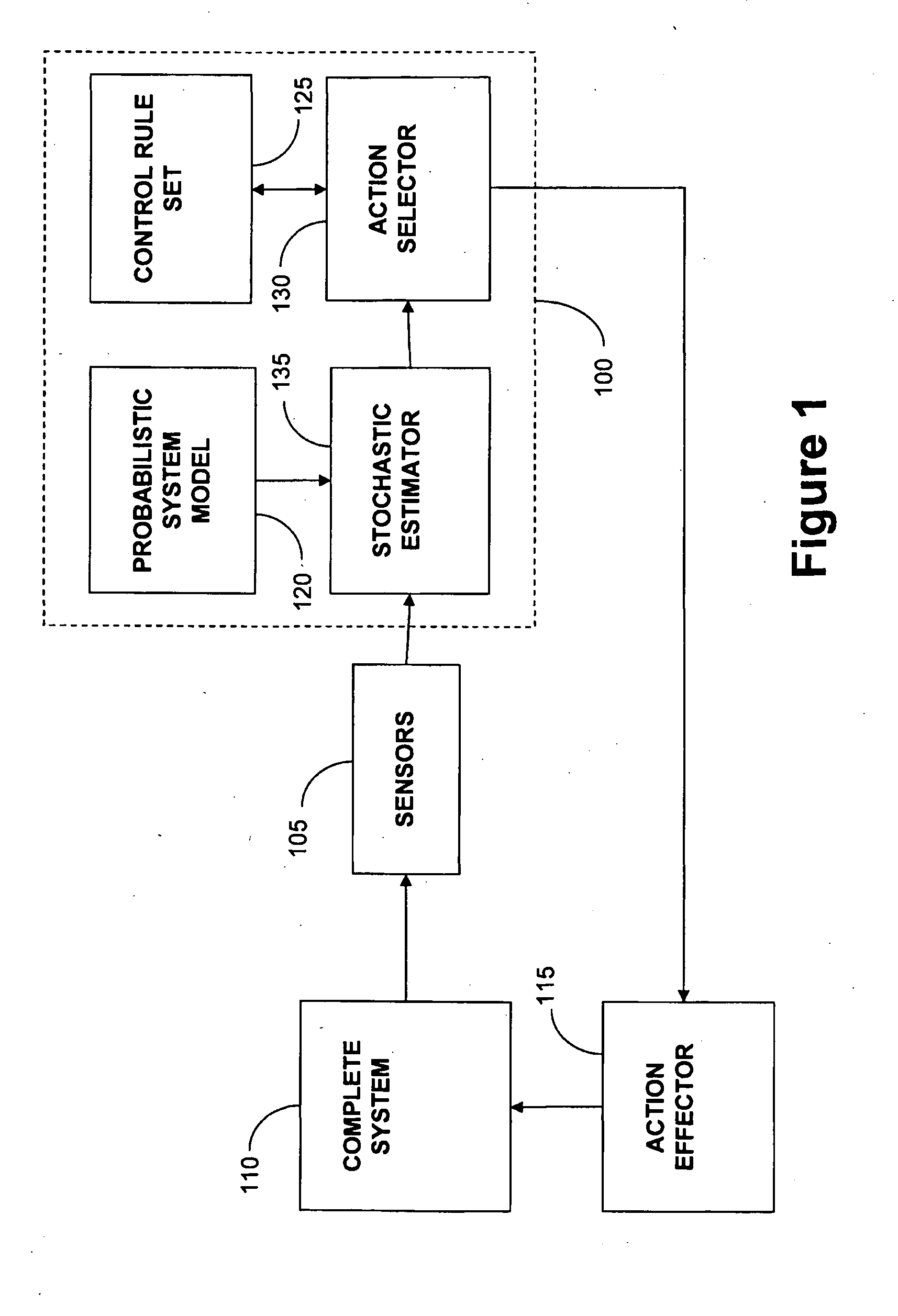Controller
- Summary
- Abstract
- Description
- Claims
- Application Information
AI Technical Summary
Benefits of technology
Problems solved by technology
Method used
Image
Examples
Embodiment Construction
[0053]Preferred embodiments of the present invention are directed to the problem of estimating the states of the system 110 on the basis of relatively meagre sensor data (105) and using this knowledge to infer an optimal decision path. Whatever the structure of the mathematical description, the result will simply be a mapping from sequences of observations to possible actions. This might be constructed as a heuristic neural network function fitting problem. The approach taken in preferred embodiments of the present invention is to represent the problem in a complete probability space of underlying dynamical states, measurements, decisions and rewards and impose a causal model structure by means of a Bayesian network expressing the joint probability of all these states in terms of a conditional probability factorisation. This structure is shown in FIG. 2.
[0054]Referring to FIG. 2, a model structure is shown representing the relationships between separate variables in the form of sepa...
PUM
 Login to View More
Login to View More Abstract
Description
Claims
Application Information
 Login to View More
Login to View More - R&D
- Intellectual Property
- Life Sciences
- Materials
- Tech Scout
- Unparalleled Data Quality
- Higher Quality Content
- 60% Fewer Hallucinations
Browse by: Latest US Patents, China's latest patents, Technical Efficacy Thesaurus, Application Domain, Technology Topic, Popular Technical Reports.
© 2025 PatSnap. All rights reserved.Legal|Privacy policy|Modern Slavery Act Transparency Statement|Sitemap|About US| Contact US: help@patsnap.com



